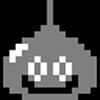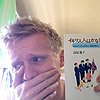After telling you the Japanese learning industry was a failure when it comes to kanji learning, it’s only fair to come up with some solutions to this mess and help you out. Learning kanji is no laughing matter (it’s more of a crying matter, really), and there are a number of ways to go about it. Sure, I could give you my opinion (and I will), but I thought it would be even more valuable for you, the kanji learner, to hear it from 10 other J-blogger kanji experts as well. These are people who have studied kanji, made mistakes, overcome obstacles, found success, and can point you in the right direction. Everybody learns differently, and by hearing from various expert opinions, hopefully you’ll figure out how you should learn kanji too (and find some sweet new J-bloggers to follow!).

Matt from AltJapan
Being a translator, I have reached a level of proficiency where I don’t need to study kanji on a daily basis like I once did. Back when I was a student I used a combo of flashcards and rote repetition (writing kanji, particularly those I had a hard time remembering, over and over again.) Mnemonic devices (associating them with little rhymes or whatever) can be a big help on that front too.
But rote study is not enough to make anything stick. You have to put yourself into a place where you are reading (and also hopefully writing) a certain amount of Japanese every day. Whether this means plowing through a newspaper, novel, magazine, manga, or favorite website doesn’t matter. It’s the act of actually using the information on a daily basis that locks it in. [AltJapan]

Thomas from NihonHacks
I don’t study kanji at all. I read books/magazines and play video games.
I did speed through Heisig a while back which gave me a nice foundation to guess word-meanings from, but I didn’t maintain it (boring).
Now I just read and learn kanji through exposure. Get books with a high picture/text ratio (ex, non-fiction books targeted at elementary school kids, on a topic you are interested in). Buy a Nintendo DS and get games that have a lot of text (Dragon Quest series, Sloane to MacHale no Nazo no Story). Read manga.
If you like science, I recommend Newton magazine. Crazy amount of colorful pictures, everything on every page is explained at least twice (text and picture captions), and not that many words on a page.

Jamaipanese from Jamaipanese
1. Start with the easy stuff and work your way up: Too often persons studying kanji for various reasons try to skip the basic easy characters. Whether it is to impress friends, teachers or just to make it harder on yourself I can never really understand why. I am no kanji pro but characters like mountain, fire, four and book should be among the first kanji you learn.
2. Focus more on reading than writing: Maybe my reasoning is flawed and it all depends on your reason for studying Japanese but I like to think that being able to recognize and read kanji is more important that writing them. Focus more and reading kanji and when it comes to writing it will only be a matter of remembering stroke order as the character will be stuck in your mind ready to be reproduced by your hands.
3. Practice and revise often: What’s the reason for learning something in the first place if you don’t practice it and take steps to remember? Top class athletes work hard to keep themselves in top shape so why should be any different with Kanji? There is a crap load of revision tools available online and through various video games and phone applications.
Bonus tip
4: Stay inspired Everyone has their reasons why they are studying Japanese, whether it be wanting to live and/or work in Japan, play imported video games, land a Japanese girlfriend/boyfriend. Focus on your inspiration and go for it! [Jamaipanese]

David from JapanDave
Best way to study the kanji is Heisig’s Remember the Kanji. At first glance, the book and method may seem a little crazy — but hear it out. The method divides kanji learning into two distinctive parts:
1) Learn how to draw the kanji from an English key word. That is, if you see the word “cat” you draw the kanji for cat. (猫)
2) Learn the pronunciations for the kanji. That is, when you see the kanji for cat (猫), you can immediately say Ah hah, that’s neko.
The idea here is that it’s far easier to learn when you are only doing one thing at a time.
That’s the theory. The actual way of learning is to simply make a story for each character that tells you how to draw it. That’s it.
Seems crazy, but it works amazingly well. The first chapter or so is available to download for free, so go give it a try. [JapanDave]

Brett from Rainbowhill Language Lab
You really have to grab kanji by both horns and pummel it into submission. There are as many ways to learn kanji as there are, well, kanji. You don’t have to try everything but definitely try enough to find out what works for you. Go for natural methods over contrived every time. Break it down into component parts, and build it back up again. Associate multiple meanings, and guess at new combinations. Above all, commit it to memory by learning to write.

Mike from Japan Is Doomed
I used ‘Basic Kanji Book I + II’ to get a basic grounding (500 kanji with all readings and useful compounds).
Since then, I’ve been adding them to my growing ‘pool’ of Kanji and vocab as I see them in the world, plus ones from school. It’s not the most thorough system but you do end up with mostly very useful knowledge. (No archaic readings or whatever).

Michael from Michael John Grist
I tried all the ways I could think of to learn Kanji: brute force memorization with flash cards, kanji games like slime forest where you kill slimes by correctly naming kanji, trying to make up stories involving kanji particles and memorize them mnemonically, listing signs and place names around Tokyo and trying to memorize them (because they’d be useful and I see them a lot), but I think all of these efforts fell down for one main reason- I’m not so interested in Japanese culture. I think key to learning a language is learning what that language communicates- which is its unique culture. So I could bash my head against kanji all day, but I’m left with the demotivating fact after it all- what do I even want these kanji for? And I never have a good answer. [Michael John Grist]

Michael from Gakuranman
Kanji. They still remain the biggest stumbling block for me, alongside advanced vocabulary. Working as a translator of Japanese in Japan I am reading blocks of Japanese text everyday, and while it has been a fantastic way to improve my understanding of the language, it’s also highlighted some of my shortcomings. I’ve realized that in order to be able to write kanji, you really need to be using them, pen to paper style.
Many of the kanji I was comfortable with before now seem to shift around in that not-quite-there space of my mind. I know it, for sure, but I just couldn’t write it if pushed to. While this isn’t a great burden on me right now (I use a computer most days), it is embarrassing come letter writing time.
So my nugget of advice is to go back to school and use a pen and paper to learn your kanji. Forget Smart.fm for a moment (but use it for vocabulary!) – when you really want to internalize those characters, you need to be writing them. Verbalizing the meanings and readings as you practice those strokes is another good way to cement them into your mind. And remember – do it a little everyday! Nothing beats repetition. Good luck! [Gakuranman]

Mari from Mari’s Diary
I guess it would be fun to find a same kanji on different words, so that you may understand the meaning of kanji slowly. 運, 運用, 運行, 運転 etc,. so you will know 運 is related to something to do with carrying or handling. You don’t need to fight with thick books or text books, a peice of map is fine. You will know river, city, mountain, gulf etc with shape or graphic. After map, you can challenge to another piece of paper like super market ad. [Mari’s Diary]

Julie from Julie In Japan
The best Kanji book I’ve been given is called Story de Oboeru Kanji 300 ストーリーで覚える漢字300 by Fusako Beuckmann. Not only does it associate each kanji part with an interesting story, but it helps with writing and piecing together common kanji pairings. This book helped me a lot when I first started learning. The book is in English, Portuguese, Korean and Spanish. ReadTheKanji is a fun and simple website that quizzes you and checks your progress. I recommend doing it for a short time every day. I also recommend joining Lang-8 and starting a journal for Japanese people to correct and comment on. I actually learned about both sites from Tofugu.
Also, I don’t know if you’d call it studying, but I learned a lot of Kanji from text messaging with friends. When I first learned the kana, my friends started sending me text messages in Japanese. First, the messages were all in hiragana, but soon I began to recognize the most common Kanji characters. Now, I think I know about 600-700 Kanji, which is decent since I’ve never formally studied it. I’m going to try the JLPT test this year for the first time, so that is the biggest study motivation right now.

Koichi from Tofugu
Ha ha! I get the last spot because I was the last person to write something. Now, you already know the mistakes I think a lot of kanji learners make, so that should give you some idea, but let me give you a quick summary on how I think you should be learning your kanji.
Tip 1: Learn the radicals and use them to your advantage. By learning radicals you can avoid the whole “having to learn every single stroke” problem that only gets worse and worse the more you learn. Radicals cut down on the number of steps you have to take to memorize a particular kanji, and fewer steps will make your brain a happy brain.
Tip 2: Start with the simplest kanji in terms of complexity (and not the simplest kanji meaning) and work your way up. If you start with kanji of simpler build (i.e. learn 1-stroke kanji first, then 2-stroke, and so on), kanji will build on each other and you’ll be able to use simpler kanji to put together more complicated kanji, like the foundation to a building.
Tip 3: Consistency is key. Learning 5 kanji a day is way more effective than learning 50 kanji all at once, once a week. Take it a little bit at a time and you’ll know a lot of kanji in a relatively short period of time. 5 kanji per day will get you to 2000 kanji in 400 days (that’s just over a year… 2000 kanji takes most people 5, 6, 7+ years to get a grip on, because they aren’t consistent). If you have more time, up it to 10 a day, but I would definitely not go beyond that. The main thing is that you are consistent and create a schedule. Make it a habit, and don’t overdo it or you’ll end up burning out.
Tip 4: Find a resource / “way of learning” that works for you. What works for me, or for any of the people above me might not be a fit for you (but then again, it may be, and that’s great!). The more you know about yourself, and how you learn, the more effectively you’ll be able to learn kanji in the long run. Be careful not to let this become a crutch or an excuse, though. If you spend all your time thinking, “no, this won’t work for me, I better research more and more on how to learn” you’ll never make it. Take action and do. Make mistakes, and figure out through experience what works for you. If something doesn’t work, move on, but you’ll never know until you actually try. As (I think) Einstein said, “A good plan today is always better than a perfect plan tomorrow.” [Tofugu]
All that being said, I hope you find something that works for you.There are some fabulous ideas up above, and you’re sure to get something out of it. But heck, what am I thinking? There must be some kanji-learning gurus reading this as too (or at least people who have attempted at some point in their life to learn kanji). What has worked well for you? What hasn’t? Share them here and help your fellow kanji-learning-humans out. We all know that every kanji-learner could use whatever they can get.
Oh, and definitely take a look at the bloggers that contributed above. They have great j-blogs, and you’ll surely enjoy what they have to say if you’re reading the monkey-loving articles I do here.
